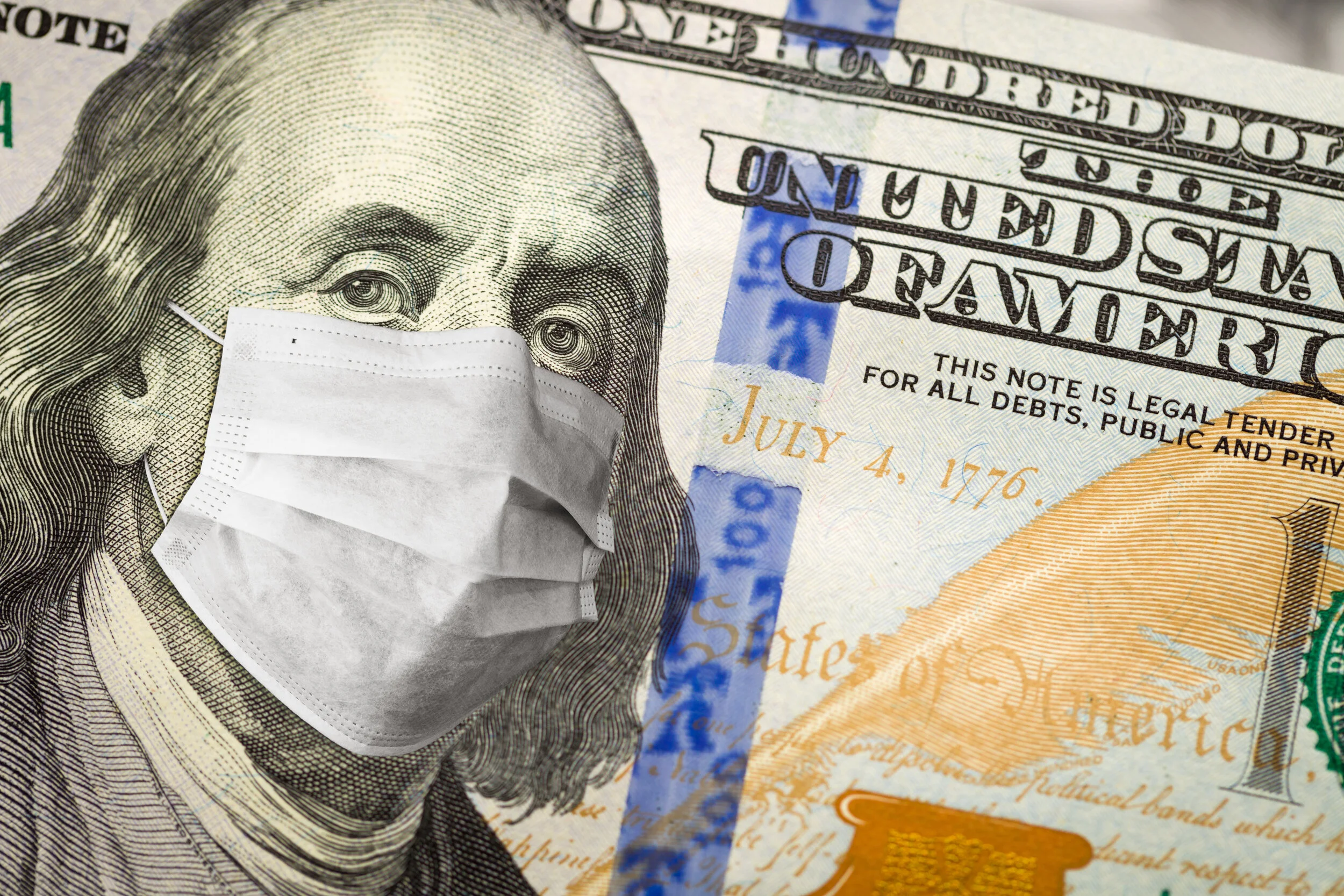We estimate that a large infrastructure bill would increase GDP by no more than $360 billion per year for 2020 and 2021. Short-run GDP expansion from new infrastructure spending is limited by available projects and likely social distancing measures, and so states could not absorb more than $300 billion per year in new federal aid over the next two years.
Short-Run Economic Effects of the CARES Act
Without the CARES Act, PWBM projects that U.S. GDP would have fallen at an annualized rate of 37 percent in 2020 Q2, with the unemployment rate reaching 12 percent by 2020 Q3.
PWBM estimates that the CARES Act will dampen the short-term decline in GDP to a 30 percent annualized rate in 2020 Q2, with the unemployment rate reaching 11 percent by 2020 Q3.
We project that the CARES Act will produce around 1.5 million additional jobs by 2020 Q3 and increase GDP by $812 billion over the next two years.
Small Business and Coronavirus Relief
In an attempt to prevent and reverse layoffs due to coronavirus, the recently-passed CARES Act established a new lending program targeted at businesses with 500 or fewer employees. These businesses account for 99.7 percent of all firms, 47.3 percent of employment, 40.7 percent of annual payroll, and about one-third of the growth in employment and wages. These businesses also account for 60 percent of employment in the leisure and hospitality sector, which has been disproportionately harmed by the pandemic’s effects.
New Charitable Deduction in the CARES Act: Budgetary and Distributional Analysis
The CARES Act establishes a new, temporary charitable deduction (limited to $300) in tax year 2020 for taxpayers who claim the standard deduction. PWBM projects that this provision would cost about $2 billion and would have little effect on total donations. More than half (53 percent) of the benefit would accrue to families in the 60th to 90th percentiles of the income distribution.
Lasting Macroeconomic Impacts of the Coronavirus Crisis, Absent Fiscal Policy Response
We estimate the lasting macroeconomic effects of the anticipated recession due to coronavirus, as the initial shock leads to lower federal revenue and higher debt. If the economy recovers the year after a deep recession ("V shape"), we project that federal debt will be 3.2 percent higher and GDP will be 0.3 percent lower by 2030. If the recovery occurs over two additional years (“U shape”), federal debt rises by 5.9 percent and GDP falls by 0.6 percent lower by 2030. Barring future fiscal policy to reduce debt, so-called “potential GDP” will, therefore, be permanently lower due to the coronavirus.
Recession Simulator
This simulation tool uses the experience of the Great Recession of 2007-2009 as a template to simulate key economic indicators during a recession beginning in March, 2020.
Continuation of Low Oil Prices Would Hinder Investment and Growth in 2020
If oil prices remain at current levels through the end of 2020, we estimate that growth in business investment will be 1.9 percentage points lower and growth in GDP will be 0.25 percentage points lower in 2020.
The Demographics of the Coronavirus Crisis: Living Arrangements of “Leisure and Hospitality” Workers
In a previous post, we presented some of the demographic, income, and geographic characteristics of leisure and hospitality workers, who have been disproportionately harmed by the economic impact of the pandemic. We expand on that analysis here with other characteristics that might be important for policy, showing that leisure and hospitality workers tend to live in cities and are more likely to rent, rather than own their homes.
Options for Emergency Lump-Sum Cash Payments in Response to Coronavirus: Budgetary and Distributional Analysis
We present budgetary and distributional estimates for three potential versions of the lump-sum payment that President Trump announced earlier today. All three options increase the after-tax income of low income households the most. However, higher-income households have more children on average and would receive larger cash payments unless additional adjustments are made.
The Demographics of the Coronavirus Crisis: Impacts at the Front Line of the “Leisure and Hospitality” Sector
The economic downturn due to coronavirus has disproportionately harmed workers in the leisure and hospitality businesses, such as restaurants and bars—these workers tend to be less-educated and lower-income.
President Trump’s Payroll Tax Holiday: Alternative Distributional Analysis
We expand our previous analysis of President Trump’s proposed payroll tax holiday by considering two scenarios for how the employer side of the tax cut would be distributed: either to the full benefit of business owners and corporate equity holders (“profits rise”) or to the full benefit of workers (“wages rise”). When profits rise, the top 1 percent of families by income receive about 29 percent of the total payroll tax cut, compared to about 4 percent of the total cut when wages rise.
President Trump’s Payroll Tax Holiday: Budgetary, Distributional, and Economic Effects
In response to the economic effects of the coronavirus, President Trump has proposed a payroll tax holiday that would temporarily eliminate all Social Security and Medicare payroll taxes through December 31st, 2020. PWBM projects that this payroll tax holiday would cost $807 billion if the holiday were run from April 1 through December 31, 2020.
Households in the bottom 20 percent of the income distribution—those households with the highest willingness to spend their tax savings—would receive about 2 percent of the total tax cut and only a third of these households would see any tax savings due to low levels of taxable income. Tax savings would also accumulate slowly over time relative to direct government spending.
PWBM estimates that eliminating payroll taxes would have little net impact on the economy in the short run and would reduce the size of the economy by 0.1 percent in 2030 and 0.2 percent in 2050 due to additional debt.



